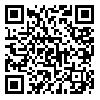BibTeX | RIS | EndNote | Medlars | ProCite | Reference Manager | RefWorks
Send citation to:
URL: http://refahj.uswr.ac.ir/article-1-2065-en.html
The aim of this article is to review drug demand reduction activities in Iran and compare them with the current scientific findings and experiments around the world. Drug demand reduction could be viewed as integration of three approaches: prevention, treatment and harm reduction. Prevention programs try to reduce incidence rate of substance abuse in the community by means of different kinds of initiatives however, only the subset of preventive measures which are comprehensive, multi-component and durable in design have been proved efficient. Furthermore, there is robust body of evidence that long-term treatment and care are exclusively effective interventions. Since the treatment compliance is substantially low among most of drug users and in advent of increasingly spreading of fatal infections like AIDS and hepatitis through sharing injection drug use, harm reduction activities has become the first priority in demand reduction domain. Iran has got the first rank in the world regarding the percentage of opioid drug use. Supply reduction view has prevailed in drug control system in contemporary history of Iran. Fortunately, drug demand reduction movement has been in progress during the last decade nevertheless, there are significant deficiencies and obstacles in terms of legislations, strategic planning, official structure and quality and quantity of activities in Iranian demand reduction system. It's crucial for Iranian professionals and officials to further their activities in the field of demand reduction.
Received: 2015/09/7 | Accepted: 2015/09/7 | Published: 2015/09/7
| Rights and permissions | |
 |
This work is licensed under a Creative Commons Attribution-NonCommercial 4.0 International License. |





